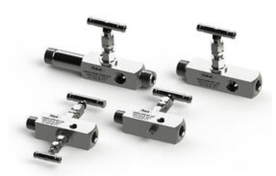When choosing valves and fittings with threaded end connections, it is important to keep thread size in mind. A properly sized thread ensures the components fasten together securely, while an improperly sized thread can result in an insufficient seal which can lead to leaks.

Thread sizes are determined by two main elements: the thread diameter (i.e., the distance between a thread’s crests) and the thread per inch (i.e., numbers of threads per inch) or pitch (i.e., the distance between one thread’s crest and another). In this blog, we discuss how to measure these dimensions, what tools are used, and how to use them.
Step-by-Step Instructions on How to Measure Threads Accurately
If you need accurate thread measurements, follow this four-step process:
1. Determine the type of thread.
There are two types of threads: straight (i.e., parallel) threads and tapered threads. Straight threads have the same major diameter across the length of the part, while tapered threads have major diameters that increase or decrease from one end to the other.
2. Measure the thread diameter.
Use a caliper to measure the major diameter of the threaded part. Measure from crest to crest on any full thread corridor in straight threads and on either the fourth or fifth thread in tapered threads. The measurement taken establishes one of the elements of the particular part’s screw size. For example, by Imperial standards, 0.060 inches converts to a No.0 screw size while 0.216 inches converts to a No.12 screw size.
3. Identify the number of threads per inch (TPI) or pitch.
Used a thread pitch gauge to determine the other element of a threaded part’s screw size—the threads per inch (TPI) or pitch. The TPI refers to how many individual threads there are in an inch of the threaded part, while the pitch is the distance between the crests of two threads. TPI is measured in the number of threads per inch (e.g., 20 TPI) and used for Imperial sizing, while pitch is measured in millimeters (e.g., 1 mm) and used for metric sizing.
4. Match the measurements to a standardized thread chart.
After steps one, two, and three, you should have answers for the following questions:
-
Is the threaded part male or female?
-
Are the threads straight or tapered?
-
What is the major diameter of the threaded part?
-
What is the TPI or pitch of the threaded part?
With these in hand, identify the appropriate thread size on a standardized thread chart. Imperial sizes are formatted as major diameter size equivalent by TPI (e.g., 10-24), while metric sizes are formatted as major diameter by pitch (e.g., M6 x 1 mm).
Essential Tools for Thread Measurement Operations
When measuring thread sizes, the three essential tools are:
-
A caliper. I.D./O.D. calipers can measure both the inner diameter (I.D.) of female threads and the outer diameter (O.D.) of male threads. They push inward on male threads and push outward on female threads to allow for accurate measurement from thread crest to thread crest.
-
A thread gauge. These measurement tools are used to measure TPI or pitch. During measurement operations, ensure they are aligned and snug against the threads.
-
A thread chart. These charts allow for the comparison and conversion of measurements to set standards. Different charts have different standards indicated based on the part type, intended purpose, or country of origin, so it’s important to use one that pertains to the particular threaded part.
How to Use a Thread Pitch Gauge
While thread gauges have a relatively easy to understand function, they can be difficult to employ correctly given the wide range of variations available. During thread measurement operations, keep in mind the following considerations regarding thread gauges:
-
Size. The gauge should be sized in regard to the given threaded part. When chosen correctly, the gauge should engage smoothly with the threaded part with little to no force. When chosen incorrectly, the gauge may damage the threads.
-
Calibration. The gauge should be properly calibrated before measuring any threads to ensure precision and accuracy.
Contact SSP Today
At SSP, we have extensive experience with instrumentation tubes, hoses, valves, connectors, and fittings. Over our years in business, we have addressed and resolved many customer questions regarding proper product selection, installation, and maintenance. One of the factors we emphasize is choosing the right size for the system—including in regard to threads—which ensures the product is compatible with the other end connections. For additional questions about thread size measurement, contact us today.


